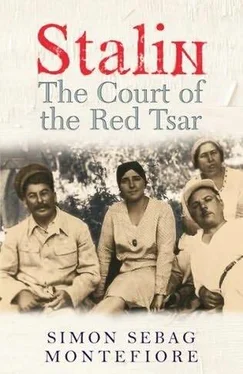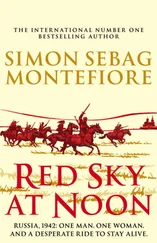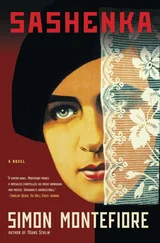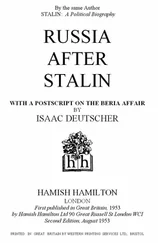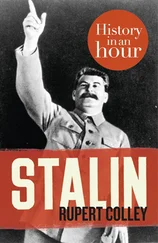In their generation, the proud exception to this narrow-minded hypocrisy were those rare Bolsheviks who combined Party discipline with European Bohemianism, the Foreign Commissar Maxim Litvinov and his English wife Ivy. She sneered openly at humbugs like Molotov and flaunted her promiscuity with a parade of Germanic lovers: “I don’t care a pin what anyone says… for I feel head and shoulders taller than anyone who can gloat on such outworn topics of scandal as who sleeps with whom.” Meanwhile Commissar Litvinov, the plump, rumpled and tough Jewish intellectual who had known Stalin a long time but was never close to him, started an affair with a “very pretty, decidedly vulgar and very sexy indeed” girl who lodged with them. She even accompanied him to diplomatic receptions and arrived at the office in tight riding breeches.
The primitive interrogators tried to suit the crime to the criminal with often absurd results: on his arrest, the First Secretary of the Jewish Autonomous Oblast in Birobizhan was appropriately accused of poisoning Kaganovich’s gefilte fish during his visit there. Presumably, throughout the many republics of the USSR, the poison was secreted in the national dishes—from the sausages of the Baltics to the spicy soups of the Buriats and the lamb stews of the Tajiks.
At the end of 1936, when Stalin inaugurated the new Constitution, Shumiatsky, the film boss, asked Molotov if he could record Stalin’s speech. On 20 November, Molotov gave permission. Maltsev, the chief of the All-Union Committee of Radiofication and Radiosound, reported joyfully to Stalin that the speech had been successfully recorded and approved. Now he wanted permission to make it into a gramophone record “for you to hear it personally.” Stalin agreed. But on 29 April 1937, when the terrified officials of the Gramophone Trust Factory listened to the gramophone, something was wrong with Stalin’s voice. They immediately reported to Poskrebyshev that there were: “1. Big noises. 2. Big intervals. 3. The absence of whole phrases. 4. Closed grooves. And 5. Jumps and lack of clarity.” The file also contained a nervous analysis of the sibilance of Stalin’s voice and how hard it was to render on gramophone. Worse, a thousand of these records had been manufactured. Some officials wanted to recall the discs but, typically for the period, the chief attacked this suggestion for its disrespect to Comrade Stalin’s voice. He thought it more respectful to distribute them regardless of the gaps, noises, jumps. The file ends with a report from Komsomolskaya Pravda that suggested that something very sinister had happened to Comrade Stalin’s voice at the Gramophone Factory where the insistence of Comrade Straik to “distribute the discs more speedily” was a “strange position.” He was obviously a wrecker and all the guilty wreckers at the factory “must be harshly punished.” No doubt the NKVD came to listen to Comrade Straik’s record collection.
Khrushchev was as fanatical a Stalinist terrorist as it was possible to be during the thirties yet his ability to destroy incriminating documents, and his memoirs, have shrouded his real conduct in mystery. A. N. Shelepin, ex-KGB boss, testified in 1988 that Khrushchev’s death lists had been removed by the secret policeman I.V. Serov. Two hundred and sixty-one pages of Khrushchev’s papers were burned between 2 and 9 July 1954.
Such absurdities abounded: in her terrible labour camp, Bukharin’s widow encountered this spirit when another prisoner informed on her because she owned a book named Dangerous Liaisons that was presumed to be a deadly espionage guide.
After interviewing Andreyev and Dora Khazan’s daughter Natasha and hearing of his innocence of all crimes, the author came upon this damning file. Andreyev’s notes and letters have survived because unlike his fellow criminals, such as Kaganovich, Malenkov and Khrushchev, he was out of power after Stalin’s death when the others managed to destroy so many incriminating documents.
Lenin, Cheka founder Felix Dzerzhinsky, and the Foreign Commissar until 1930, Chicherin, were hereditary noblemen, as were Molotov, Zhdanov, Sergo and Tukhachevsky, according to Peter the Great’s Table of Ranks which decreed rank until 1917. None were titled nobility.
Martha and her mother had been invited to Tiflis for the celebration of the poet Rustaveli’s 750th anniversary by Timosha’s new lover, Academician Lupel. There, through a slit in the door, she had seen him arrested at the dead of night: “I saw five men take him away,” she remembered. Timosha’s later affair with Stalin’s court architect, Merzhanov, also ended in his arrest. “I’m cursed,” Timosha Peshkova exclaimed. “Everyone I touch is ruined.”
Nadezhda Mandelstam wrote beautifully of how she and her husband had lain awake in the Writers’ Union building until the lift had passed their floor.
After Stalin’s death, the Serebryakovs managed to get half the property returned to them but the Vyshinskys kept the other half. Thus today, sixty years after their father was shot by their neighbour, the Serebryakovs spend each weekend next to the Vyshinskys.
There were two Rosa Kaganoviches: Lazar’s sister Rosa died young in 1924 while his niece Rosa lived in Rostov and then moved to Moscow where she still lives. It is possible that they met Stalin but they did not marry him.
The ancient city of Samara had been renamed after Kuibyshev on his death in 1935.
Did Stalin recall Postyshev’s slight cheekiness in 1931? When Stalin wrote to him to complain about the list of those to receive the Order of Lenin: “We give the Order of Lenin to any old shitters.” Postyshev replied cheerfully that the “shitters” were all approved by Stalin himself.
Khrushchev, like other regional bosses such as Beria and Zhdanov, became the object of an extravagant local cult: a “Song of Khrushchev” soon joined the “Song for Beria” and odes to Yezhov in the Soviet songbook.
His splendid gravestone in the Novodevichy Cemetery not far from Nadya Stalin’s grave gives no hint of his sinister end.
He usually signed documents in tiny neat writing in a distinctive turquoise ink or on a turquoise typewriter that did not clash with Stalin’s blue or red crayons.
The author is grateful to Alyosha Mirtskhulava, Beria’s Georgian Komsomol boss, and later Georgian First Secretary, for his interview in Tbilisi.
The case in question concerned an investigation to find the person who had mistakenly burned the books of Lenin, Stalin and Gorky in a furnace: another example of the absurdity and deadliness of the Terror.
In this case, Stalin backed Beria’s dismissal of the case against Shipping Commissar Tevosian but told Mikoyan: “Tell him the CC knows he was recruited by Krupp as a German agent. Everyone understands a person gets trapped… If he confesses it honestly… the CC will forgive him.” Mikoyan called Tevosian into his office to offer him Stalin’s trick but the Commissar refused to confess, which Stalin accepted. Tevosian was to be one of the major industrial managers of WWII.
Her name was changed to that of Yevgenia’s first husband, Khayutin—but she remained loyal to her adoptive father into the next millennium. Natasha Yezhova survived after enduring terrible sufferings on her stepfather’s behalf. Vasily Grossman, the author of the classic novel Life and Fate , who knew the family, attending the salons with Babel and others, wrote a short story about Natasha’s tragic childhood. She became a musician in Penza and Magadan. In May 1998, she applied for Yezhov’s rehabilitation. Ironically she had a case since he was certainly not guilty of the espionage for which he was executed. Her appeal was denied. At the time of writing, she is alive.
Читать дальше
